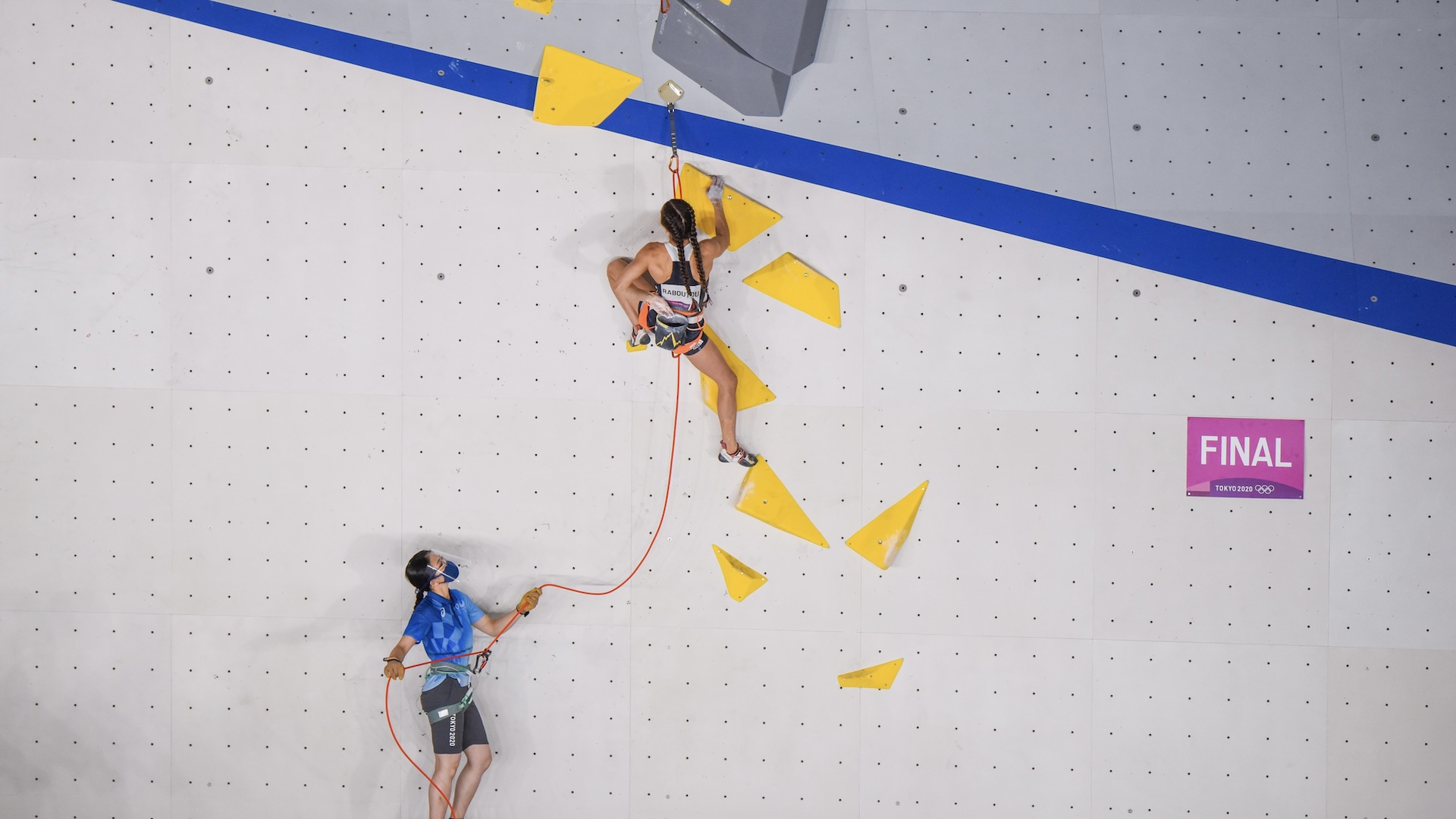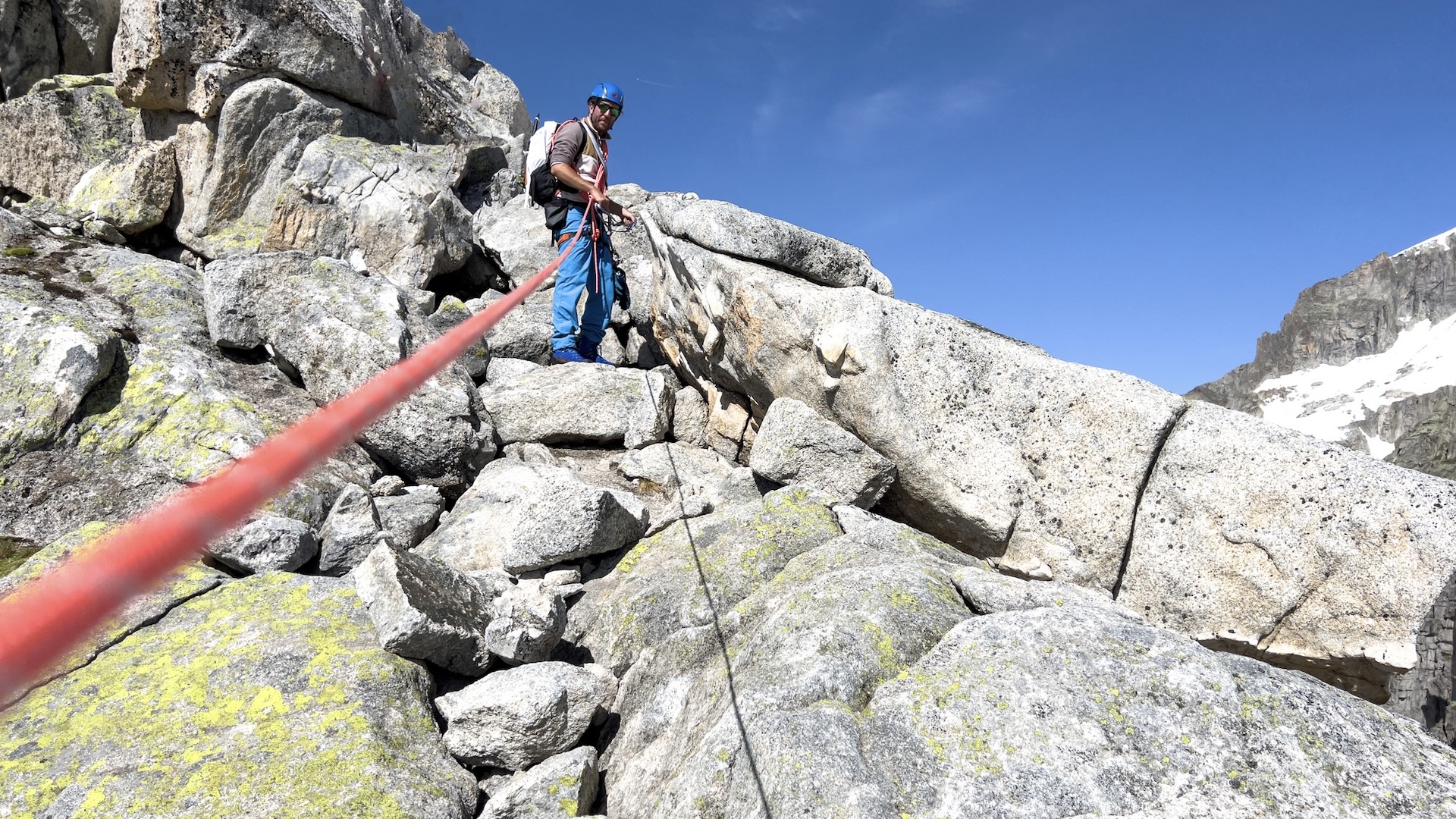What is lead climbing? Learn the ropes of this Olympic event
A guide to the discipline known as lead climbing, which can take place indoors and outdoors, both competitively and as a leisure activity

Lead climbing is one of a number of different types of climbing. This discipline of climbing can take place on rock, ice or indoor climbing walls.
If you've been watching the Olympics sport climbing at Paris 2024 you'll have noticed there are three competitive formats: speed climbing, bouldering and lead climbing. While speed climbing is a separate event, boulder and lead are counted in the same discipline. Confused? Let’s explain what lead climbing is.

The basics of climbing
Climbing sees participants scaling boulders, rock faces, mountains or artificial walls. The aim is to ascend from base to top using aids. These aids for rock climbing can be natural hand and foot holds created in the rock, or artificial holds bolted to walls, both at indoor and outdoor climbing centres. Ice climbers use ice axes and crampons on their boots as aids for ascents of ice walls.
When climbing, its a common practice to utilise a system of rope, belays and anchors – or protection – to make sure that if the climber falls they do to end up hitting the ground.
Put simply, a belay device acts as a friction brake, so that when a climber falls with any slack in the rope, the fall is brought to a stop. The belay device is attached to the harness worn by each climber. The anchors, or protection, are located at regular intervals on a wall or rock face so that any fall is only a short section of the climb.
Most climbers work in pairs with one person climbing and the other person securing their position by holding a rope that runs through the belays on each climber’s harness. Once the top of climb is reached, the rope can be used to abseil back off the face of the climb, whether that is rock, ice or indoor wall.

What are the different types of climbing?
There are many different types of climbing, although the most popular include rock climbing, which is also known as traditional or trad climbing. Trad climbing takes place, as you might imagine, on rock faces. The rock faces can be small or vast, such as in Yosemite National Park, and at a range of angles.
Advnture Newsletter
All the latest inspiration, tips and guides to help you plan your next Advnture!
Sport climbing is generally used to describe climbing that makes use of holds bolted to face of the climb. The holds can be bolted to rock or to indoor artificial walls.
Sport climbing can be done as a form of “top rope” climbing (or top roping). This means the climber is securely attached to a climbing rope that runs through a fixed anchor at the top of the climbing route and back down to the belayer (or “second" climber) at the base of the climb.
Sport climbing can also make use of a series of anchors located at regular intervals on the climb. The rope is fed through the anchors as the climber scales the wall or rock face. These anchors – also called protection – can be used in “lead climbing”. (More on that later.)
As you might expect, ice climbing takes place on walls of ice. Sometimes, there will be a mix of rock and ice and this is known as “mixed climbing”.
Some climbing centers have artificial ice climbing walls, but most ice climbing takes place in winter when conditions and temperatures allow for a solid wall of ice to form on rock faces.
Bouldering see climbers scaling large boulders, both natural boulders outdoors and man-made boulders indoors. Bouldering is a form of rock climbing where you climb rock formations that are smaller and closer to the ground. The main difference between bouldering and rock climbing is that in bouldering you don’t use any of the typical rock climbing gear, such as a harness, ropes, belays and protection.

What does lead climbing mean?
First, it is probably easier to describe what lead climbing is not. Many climbing centres have a top rope system so that the climber is attached to a climbing rope that runs through a fixed anchor at the top of the route and back down to the belayer at the base of the climb.
The top rope format can also be found at some sport climbing venues outdoors. Because there is an anchor at the top of the climb that the rope feeds through, this provides protection for the climber should they fall during the climb.
The top anchor system requires a second climber as a belayer, or some centres have auto-belays. This means the belay device will automatically act as a brake if it detects a weight – the climber – falling so as to arrest the fall.
In most other situations, climbing needs to be led, or have a lead climber.
Lead climbing – also known as leading – sees the lead – or first – climber clipping their rope to pieces of climbing protection as they ascend the climbing route. At the same time, the second climber, or belayer, remains at the base of the route and belays the rope to protect the lead climber if they fall.
With lead climbing, there a greater risk to the lead climber because if they fall without managing to get the rope into a piece of protection, they will fall as far as the protection or anchor below them.
Once the lead climber has scaled a wall or a section of rock face – known as a pitch – the second climber is then able to ascend to reach the lead climber's position above.
Lead climbing can be part of a trad climbing activity or seen in sport climbing. With traditional climbing, the lead climber needs to insert their own protection. This protection can take the from of different items, such as bolts, cams and nuts.
When sport climbing, the anchors are usually already attached to the wall so that the lead climber only needs to feed through the rope, rather than placing the protection themselves and then feeding the rope through.
Lead climbing is also a part of ice climbing. Screws need to be used for protection in the ice to make sure any fall is arrested.
You can watch athletes competing in lead climbing at the Olympics. In the lead event, athletes climb as high as they can on a wall more than 15 metres high in six minutes without having seen the route ahead of time. They need to protect themselves from falling as they climb by using the anchors on the wall.
Our guide to rock climbing terms explains more about the specialist climbing language used in this article.

Fiona Russell is a widely published adventure journalist and blogger, better known as Fiona Outdoors. She is based in Scotland and is an all-round outdoors enthusiast with favorite activities including trail running, mountain walking, mountain biking, road cycling, triathlon and skiing (both downhill and backcountry). Aside from her own adventures, Fiona's biggest aim is to inspire others to enjoy getting outside and exploring, especially through her writing. She is also rarely seen without a running skort! Find out more at Fiona Outdoors.
